Back to library
How kids learn this at school: Shapes and Area
Learning about shapes is important because everything in the environment, both natural and manmade, is made up of shapes.
Children begin to learn about shapes at a very early age, by observing their environment, and by playing with objects. Babies will pick up and touch things that they see around them. Toddlers and pre-school children may build roads, buildings, and towers with blocks. This is the beginning of an understanding of shapes and objects through exploration.
In school, this understanding of shapes is extended to skills like grouping, comparing and measuring, which are useful in later life.
Physical (concrete) objects
At school, your child will begin to look at, manipulate and make shapes using physical objects and materials.
Some of the materials that teachers use with your child may include:
Plastic or wooden shapes/objects
Children put these together to make patterns or other shapes.
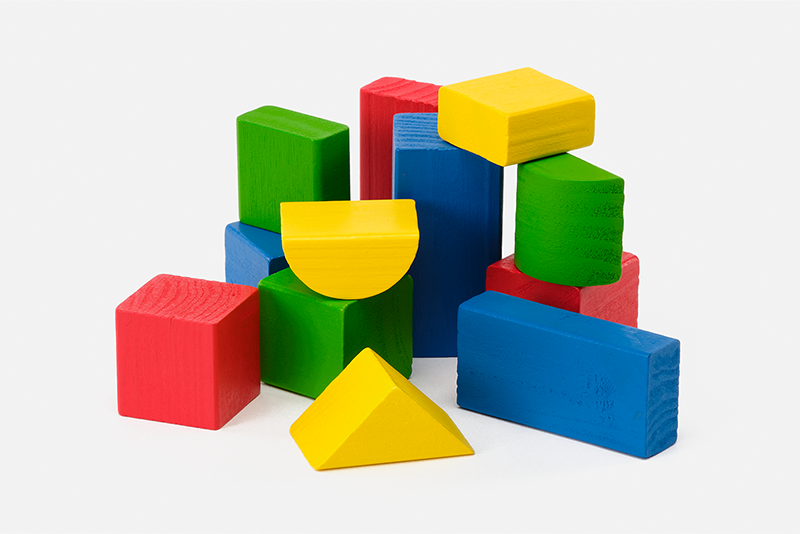
Physical (concrete) objects
Geo-sticks
Children connect these to make different shapes.
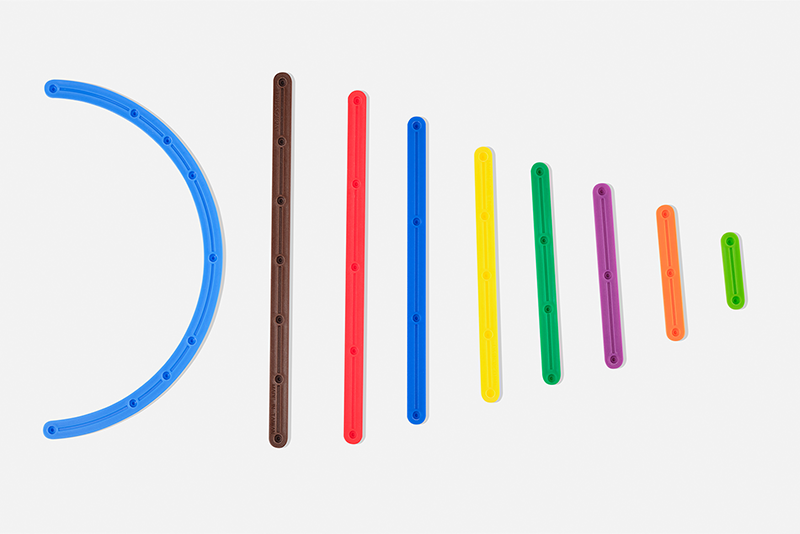
Physical (concrete) objects
Geo-boards
Children put rubber bands around pegs to form different shapes (the Area 6 game in Town Squared uses a similar structure to explore triangles and area).
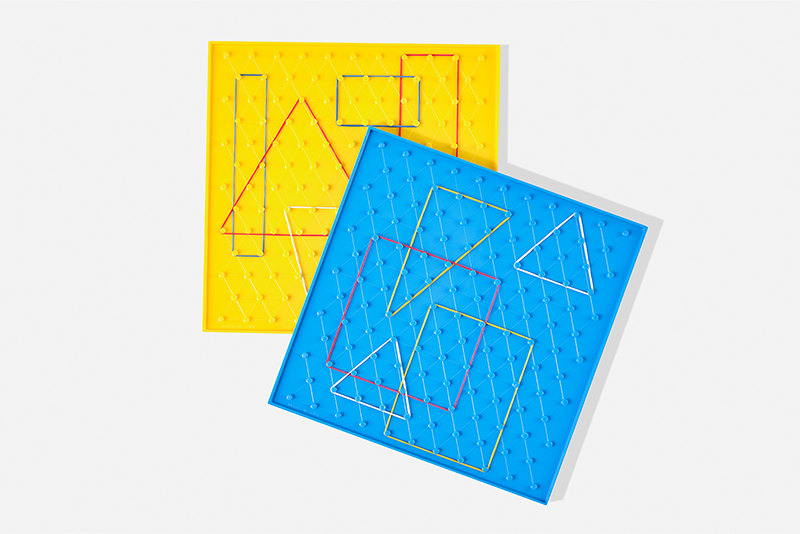
Exploration
Exploring shapes in this way begins in pre-school and continues into primary school and beyond. Here are some of the ways your child may explore shapes and objects at school.
Possible focus for years F-2
Children in these year levels will be encouraged to use physical shapes and blocks to make other shapes and objects, by putting them together in different ways.
For example, your child may be given some cut-out paper squares, rectangles, and triangles. While playing and exploring they may put the triangle on top of the square to form a house, and use the rectangles to make windows and doors for their house.
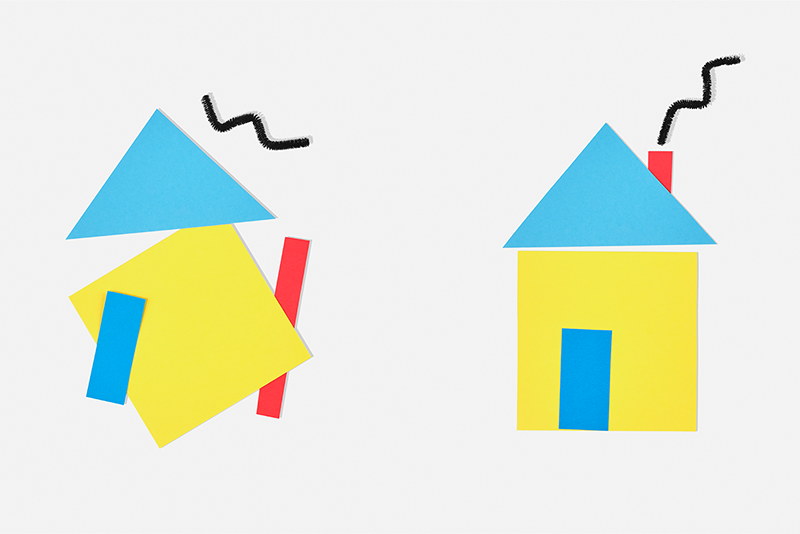
Your child will also be encouraged to look around their classroom and playground to find some of these shapes. For example, your child may point to the classroom door and say that it looks like a rectangle. They may point to a ball and say it looks like a circle, and so on.
Possible focus for years 2-5
Exploration of shapes and objects will begin to include moving shapes and objects around. Your child will be encouraged to slide shapes, turn them around and flip them over. They will be asked to explain what they see when they do this, and will be introduced to new words to describe these changes.
They may be asked to draw these shapes or objects after they move them, to help them remember the shapes and words.
Possible focus for years 3-4
Later in their school life, children are encouraged to explore and make shapes that show symmetry (mirror images) and tessellation (shapes connected that do not have any gaps). This is an early introduction to mathematical patterns, which is useful for many maths and science activities.
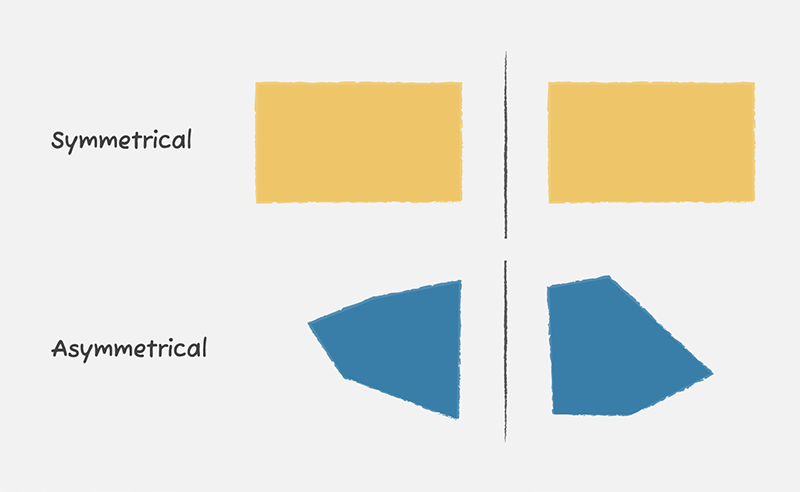
Categorising and classifying
Possible focus for years F-2
Thinking about how to group things is an essential part of early maths learning, as it lays the foundations for logical thinking and numeracy. Children apply the logic of grouping things to more complex equations later on in school.
Your child may be asked to sort out a variety of shapes they are given. They may be encouraged to sort the shapes out in any way they wish, and then explain how they sorted them.
For example, they may say, "I put all these shapes together because they have four sides, and I put these other shapes together because they all have curved sides."

Comparing and contrasting
Possible focus for years 3-4
As a natural follow-on from grouping, your child may be asked to describe what is similar and what is different between two or more shapes.
For example, looking at the 4-sided shapes above, your child might say, "they all have 4 straight sides" (similarity), "but two of them have all 90-degree angles, and two of them do not have any 90-degree angles" (difference).
This helps children structure their thinking and begin to think through problems logically.

Representing shapes & objects
Possible focus for years F-4
Another way that children practice these skills is to represent the various shapes in some way. They may draw a picture of the shape with pencil on paper, or they may draw them and move them around using software on a computer or tablet at school.
Possible focus for years 5-8
As they get older, children may be asked to draw 3 dimensional objects, which is more difficult to do and takes practice. An isometric grid (shown below as dot paper) may be used to help children draw these objects.
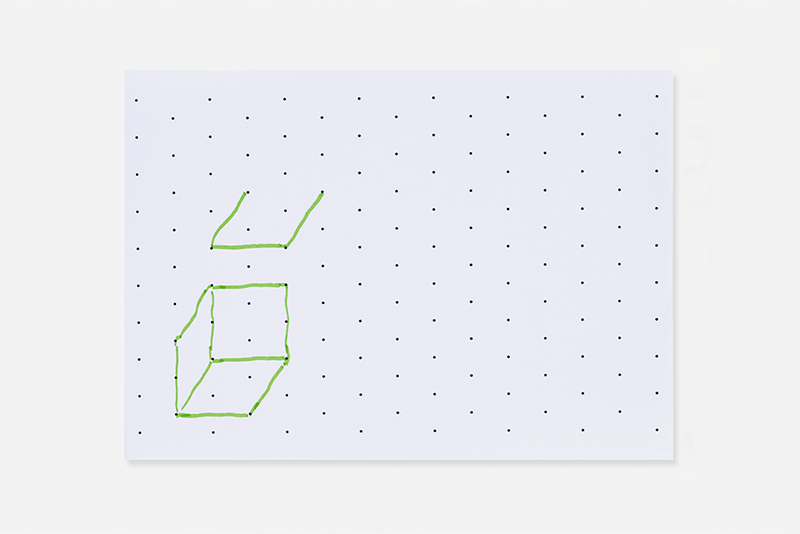
Visualisation
Possible focus for years 2-8
Your child may be encouraged to visualise (make a picture in their head of) a shape and then make or draw it.
For example, your child's teacher may say, "Make a picture of a triangle on top of a square. Draw what you see. Now flip the triangle and square upside down in your head. Draw what you see."
Encouraging a child to visualise is a very important skill that will assist them in later life to plan for things more efficiently.
For example, if they want to make a cubby house, they can visualise the pieces they will need and how they will fit together to form the cubby house. Or, if they are moving and need to pack some boxes, visualising will help them determine what things will fit in each box and how they will fit.

A teacher may also encourage children to make an image from shapes (like the house made from paper shapes, above), then walk around and look at it from a different point of view. They will encourage your child to notice that although it might look different, it is still the same shape. Teachers will help your child understand that just moving a shape around doesn't change the actual shape.
Exploring area & perimeter
Possible focus for years 5-8
In the later primary years, your child may be encouraged to solve problems that involve area (the space inside of a shape) and perimeter (the distance around a shape).
For example, children may be asked to design a vegetable garden for the school, with building materials that allow for a perimeter of 30 metres. They might need to draw different layouts to see what the garden could look like. They may also be asked whether the area would be the same for each example. These types of questions encourage children to think more deeply about the world around them and how we manage the spaces we live in.
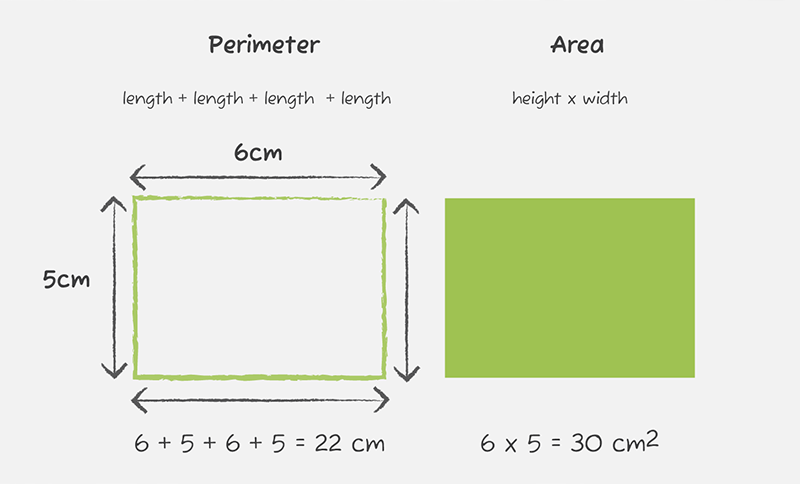
Summary
Shapes/objects and area are taught in schools using physical shapes and objects that can be handled and explored.
Over time, children learn to describe and move shapes and objects, look at them from different points of view, and use two-dimensional shapes (nets) to make three-dimensional objects. New shapes/objects and their definitions will gradually be added as your child moves through primary and secondary school.
Exploring shapes and area helps prepare them for later in their home or working life, when they encounter situations where they need to understand and work with these concepts.
